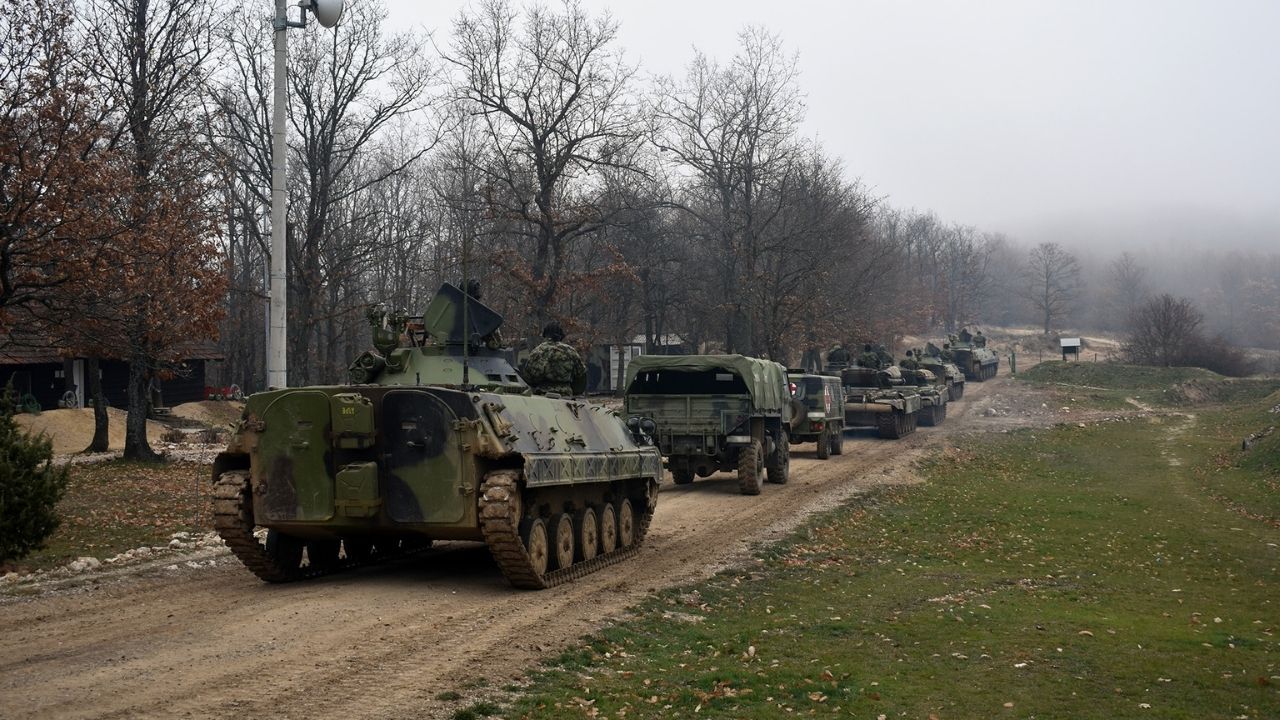
Insurgency in the Preševo Valley is a complex topic that has intrigued many. This region, located in southern Serbia, has seen its share of conflict, particularly between ethnic Albanians and Serbian forces. Why did this insurgency occur? The roots lie in ethnic tensions, political disputes, and historical grievances. Understanding these factors is crucial for grasping the broader implications of the conflict. This blog post will delve into 25 key facts that shed light on the causes, key players, and outcomes of the insurgency. Ready to learn more? Let's dive into the intricate details of this significant historical event.
Key Takeaways:
- The insurgency in the Preševo Valley, fueled by historical tensions, led to violence and displacement. It also shaped regional politics and strained relations between ethnic groups.
- Despite relative peace today, the legacy of the insurgency still affects the Preševo Valley, impacting interethnic relations and ongoing efforts for peace and development.
Historical Background
Understanding the insurgency in the Preševo Valley requires a look at its historical context. This region, located in southern Serbia, has a complex past influenced by ethnic tensions and political changes.
- The Preševo Valley is home to a significant Albanian population, which has historically sought greater autonomy.
- The region's ethnic composition has been a source of tension since the breakup of Yugoslavia in the early 1990s.
- The insurgency in the Preševo Valley began in 1999, following the Kosovo War, when ethnic Albanians sought to join Kosovo.
- The Liberation Army of Preševo, Medveđa, and Bujanovac (UÇPMB) was formed to fight for the rights of ethnic Albanians in the region.
- The conflict was part of a broader struggle for ethnic Albanians in the Balkans to gain independence or greater autonomy.
Key Events
Several significant events shaped the insurgency in the Preševo Valley. These moments highlight the intensity and complexity of the conflict.
- In 2000, the UÇPMB launched attacks against Serbian police and military forces.
- The conflict escalated in 2001, leading to increased violence and casualties on both sides.
- The Končulj Agreement, signed in May 2001, aimed to end hostilities and disarm the UÇPMB.
- NATO played a role in mediating the conflict, helping to broker peace between the warring parties.
- Despite the agreement, sporadic violence continued in the region for several years.
Political Implications
The insurgency had significant political ramifications for Serbia and the broader Balkan region. These impacts continue to influence regional politics today.
- The conflict strained relations between Serbia and Kosovo, complicating efforts for peace and stability.
- The insurgency highlighted the need for greater minority rights and political representation in Serbia.
- The European Union and other international organizations became more involved in the region, pushing for reforms and peacebuilding efforts.
- The conflict influenced Serbia's approach to ethnic minorities, leading to changes in policy and governance.
- The insurgency also affected Serbia's path to European Union membership, as stability and minority rights became key criteria for accession.
Humanitarian Impact
The insurgency in the Preševo Valley had a profound humanitarian impact on the local population. The conflict caused displacement, suffering, and long-term challenges for residents.
- Thousands of people were displaced during the conflict, seeking refuge in safer areas.
- The violence led to significant loss of life and injuries among both combatants and civilians.
- Many homes and infrastructure were destroyed, leaving lasting scars on the region.
- The conflict disrupted education and healthcare services, affecting the well-being of residents.
- Humanitarian organizations played a crucial role in providing aid and support to those affected by the conflict.
Current Situation
Today, the Preševo Valley remains a region of interest due to its complex history and ongoing challenges. Understanding the current situation helps to grasp the long-term effects of the insurgency.
- The region has seen relative peace in recent years, but tensions still exist between ethnic Albanians and Serbs.
- Efforts to improve economic conditions and infrastructure are ongoing, aiming to rebuild the region.
- Political representation for ethnic Albanians has improved, but challenges remain in achieving full equality.
- The legacy of the insurgency continues to influence local politics and interethnic relations.
- International organizations remain engaged in the region, supporting peacebuilding and development efforts.
Final Thoughts on Preševo Valley Insurgency
The Preševo Valley insurgency remains a significant chapter in Balkan history. Understanding the conflict's roots helps grasp the region's current dynamics. The ethnic tensions between Albanians and Serbs fueled the unrest, leading to a series of violent clashes. Despite the ceasefire agreements, underlying issues persist, affecting the political landscape today.
The international community's role in mediating peace was crucial, yet challenges remain. The insurgency's impact on local populations, including displacement and economic hardship, continues to shape their lives. Learning from this period can guide future conflict resolution efforts in similar regions.
By examining these 25 facts, we gain a clearer picture of the Preševo Valley insurgency and its lasting effects. Awareness and education are key to preventing history from repeating itself. Let's strive for a future where peace and understanding prevail over division and conflict.
Frequently Asked Questions
Was this page helpful?
Our commitment to delivering trustworthy and engaging content is at the heart of what we do. Each fact on our site is contributed by real users like you, bringing a wealth of diverse insights and information. To ensure the highest standards of accuracy and reliability, our dedicated editors meticulously review each submission. This process guarantees that the facts we share are not only fascinating but also credible. Trust in our commitment to quality and authenticity as you explore and learn with us.
